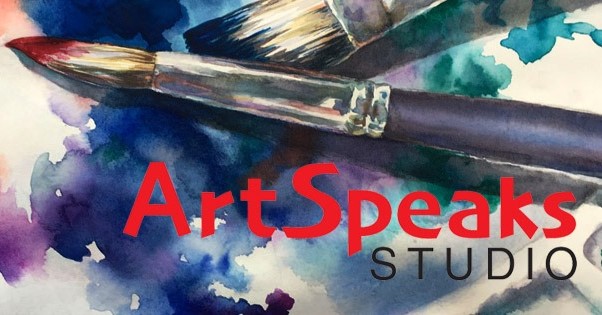Art is a communication between the artist and whoever looks at the artwork. Today I am going to explain how that perspective benefits painters.
The first question I ask students as they are deciding what to paint is “what do you want your painting to be about?”
I ask this question in order to help them design a composition or evaluate the success of the painting at different stages. As in any communication, the communicator should know what response we want from the audience.
Like every other human activity that is intended to be received by others, when we make art, we are trying to communicate with others. For this reason, we can adapt the classic communication model that shows a sender, message, and receiver for art. This model can be helpful in trying to understand why the communication succeeds or fails.
With artworks, when we talk about the sender, that is the artist and the work the artist creates is guided by the artist’s experience, skill, intention, culture and personality. The artwork is the medium of the communication and when we try to understand it, we look at where it is encountered (the context), as well as what medium was used, what techniques were used, the form (or design elements and principles used), and the content (what it is trying to say).
But the viewer is also really important to the success of an artwork. As in any communication, if the viewer isn’t receptive to the work of art, the artwork will not be appreciated. The openness of the audience to a given work is based upon the experience of the viewer, the interest of the viewer in it, the understanding of it by the viewer, the culture and background of the viewer, and the personality of the viewer.
The artist needs to understand that all of those factors will help to determine whether an artwork is viewed positively. For instance, in the United States non-objective abstractions are not very popular because people do not understand that paintings without representational subject matter are about design. The subject is the pleasure that is evoked from the relationships between the colors, lines, sizes, shapes, textures, and proportions. If you have never been introduced to the elements and principles of design, you are less likely to understand what the point is. I am sure that Radha Chatterjee realizes that her abstract paintings are not appreciated by everyone but this one was included in the competitive National Watercolor Society International Exhibition in 2018.
Because of the overall lack of art education in the US, the general population tends to be most enthusiastic about artworks that are representational and the more they look similar to a photo, the better. This is because it is easy to judge whether the drawing is accurate, which is a simple way to assess whether it is “good.” Evaluating the artwork in this way is easy – just assess whether it looks like a photo or not. More experienced viewers apply other criteria as well.
Most people can accept less naturalistic works if they deviate in a way that is familiar to them as Impressionist paintings do, but the more abstract the work is, the less popular it will be with less experienced viewers in our culture.
The result of this is that only a subset of the potential audience will appreciate any particular painting. When artists are selecting subject matter to paint, they need to figure out who those receptive people might be and how to create something that is most likely to resonate with them. And there is an audience for almost everything if you can find it. As you choose what subject matter to paint, ask yourself what attracts you to the subject. You can paint whatever you want, but be sure to consider:
– Your own Emotional Associations
– The Design: Shapes, Colors, Textures, etc.
– What Technique you can use
– The Meaning you seek to express
– The Mood you want to create
and what medium do you prefer to use.
Medium is an important consideration. Not every viewer is receptive to every artistic material. For instance, many artists who paint in watercolor only show their works with other watercolors because people who don’t know anything about the medium are less likely to respond it. Having not seen the range of subject matter and techniques that are possible, they don’t really understand or appreciate what they are seeing. Choose the medium you want to use but then support the intent of your artwork with it.
The crux of it is that artists must have some understanding of themselves, their potential audience, the materials, design principles, and their technical skills in order to create paintings that will have the most impact and will please their soul.
Watch the video at https://youtu.be/dxoQ5pwOObk






Comments